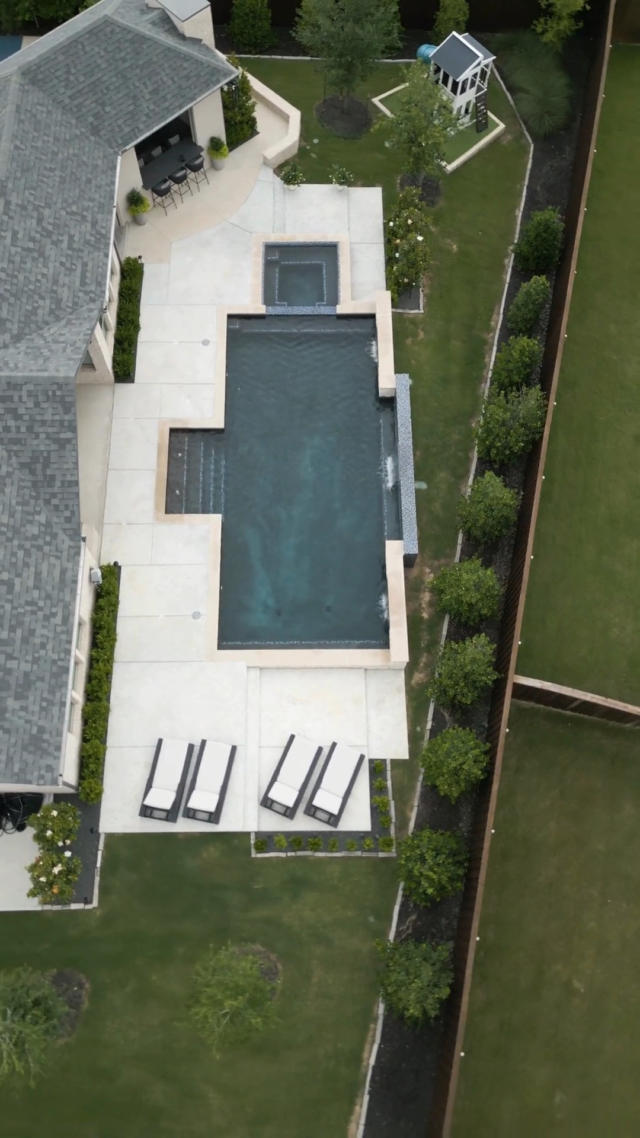Pool Decking: Choosing the Right Material for Your Remodel
Your pool might be the centerpiece of your backyard, but the decking that surrounds it can be almost as important an element when it comes to determining the overall look and experience.
If you’re thinking about remodeling your pool and decking, it’s important to understand what effect the different pool deck options available can have, so that you can make sure that you’re achieving the result you want.
In this article, we’re going to be looking at some of the more popular pool decking materials and discover their different advantages and disadvantages, so that you can be better informed when it comes to your next pool remodeling.
Concrete
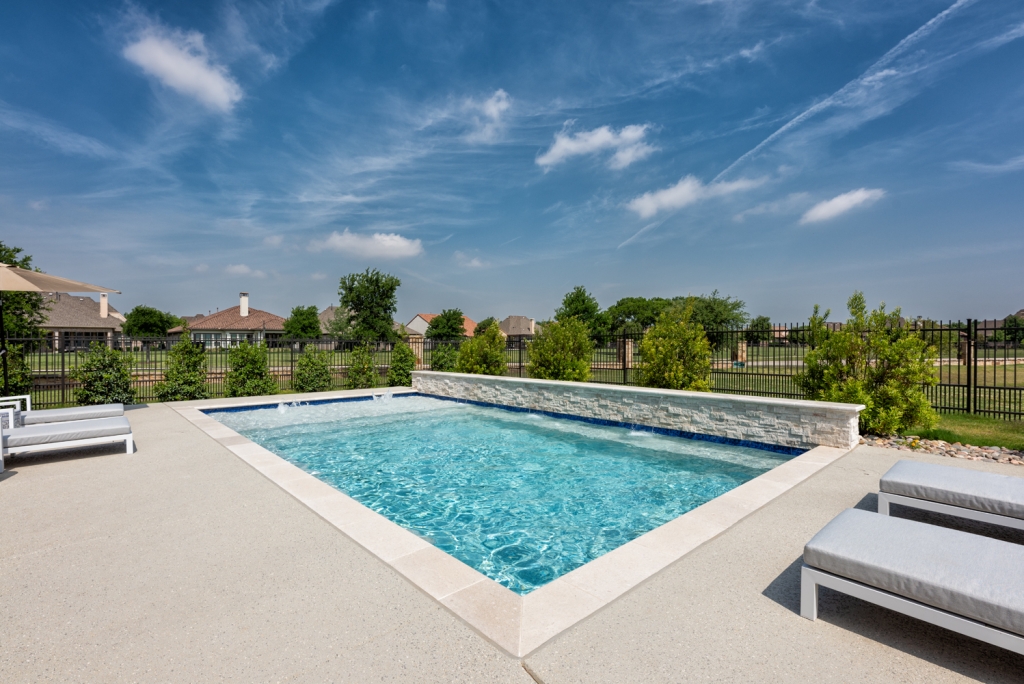
Concrete is one of the most popular of all pool decking surfaces, and not just because it’s more affordable than many of the alternatives. It’s a fine choice for a minimalist look, but you can also apply attractive finishes – such as staining, stamping, and stenciling – that can make it far more interesting to the eye.
Concrete is also easy to maintain, and once it’s been laid it’s likely to give you many years of solid, reliable service.
If you want to have exposed aggregates on your concrete deck to achieve a more pleasing finish, you need to choose carefully. That’s because while some aggregates can make the decking safer to walk on by improving grip, others can have the opposite effect. Meanwhile, some aggregates can easily hurt bare feet when trod on, so you need to make sure there are no jagged edges.
Wood
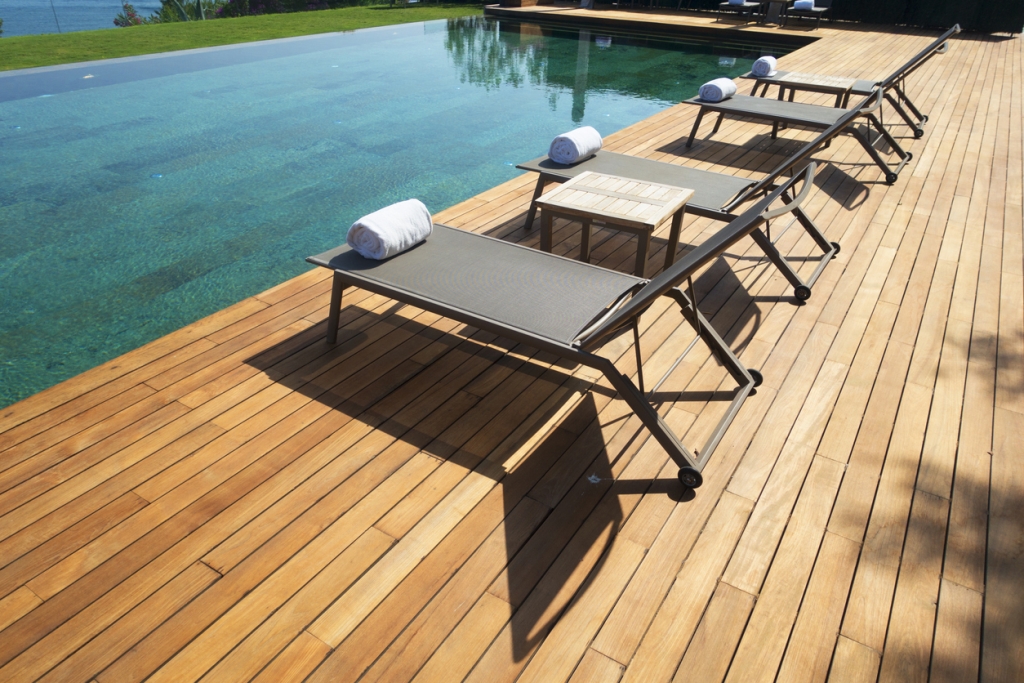
Wood is probably the best deck material for providing a warm and natural look and feel to your pool and its surroundings. It can be used to help your pool area blend in with the immediate environment and thus create a harmonious and well-balanced ambiance.
There is a wide choice of types of wood you can use to create your new deck, including pine, cedar, teak, and Brazilian Ipe. That gives you plenty of choice in terms of budget, design, and durability.
As a natural material, your wooden deck is going to need annual maintenance that is likely to include cleaning, sanding, oiling, and sealing. You also want to keep an eye out for signs of splintering that could easily cause unpleasant injuries.
Composite wood
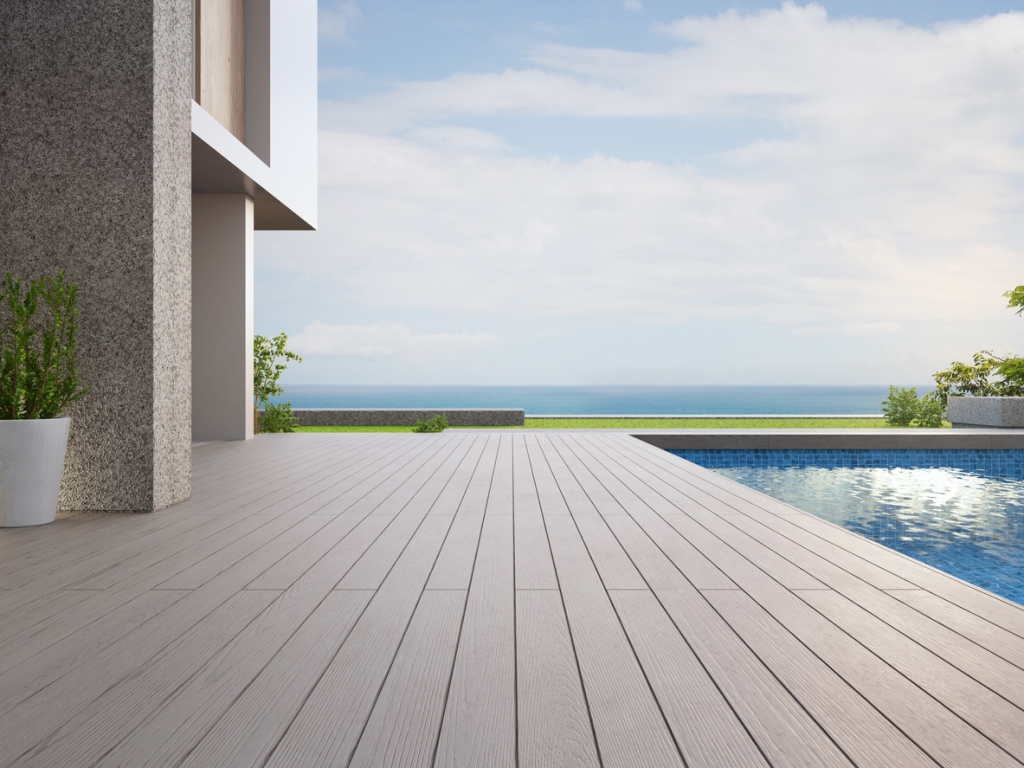
Composite wood sounds like it has to be a cheap alternative to the real thing, but that really isn’t the case. Because it’s generally been treated with various chemicals beforehand, it’s actually easier to maintain and more resistant to rotting than natural wood. You can get it in a range of wood styles that closely resemble the real thing, so you’re not losing out on the look or style either.
Modern composite wood is also usually manufactured to be slip-resistant and, unlike real wood, you don’t have to worry about it splintering either, so it scores highly on the safety index too.
Stone
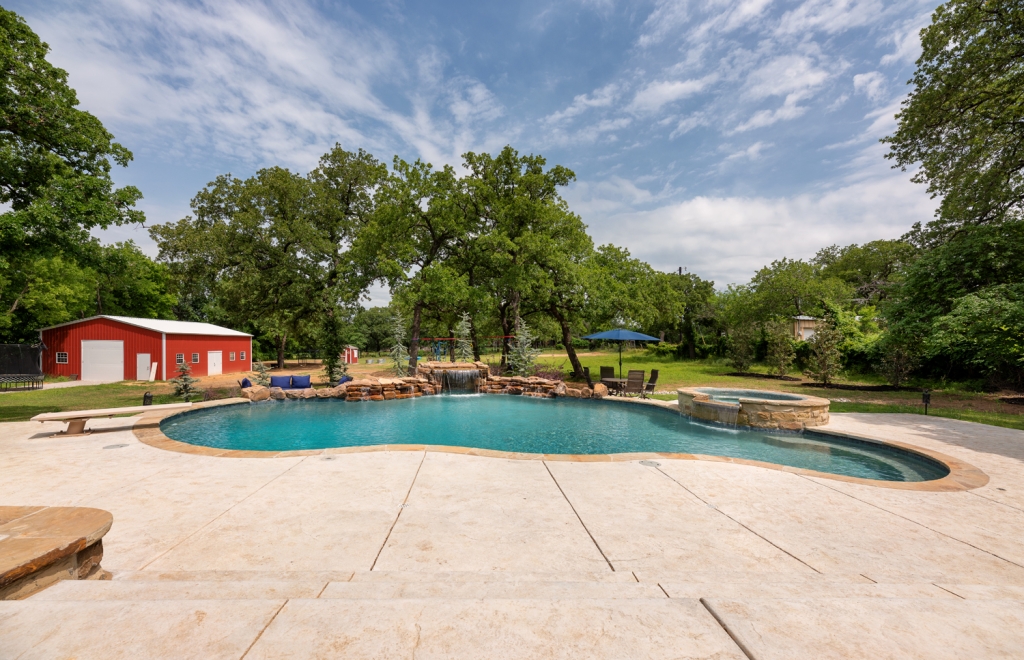
Like real wood, stone decking gives you a truly natural look and feel, adding considerably to the ambiance and aesthetics of your backyard. It also has the benefit of being durable, slip-resistant, and cool to the touch even on hot days.
On the downside, you’ll often have to pay more for those benefits, because stone is one of the more expensive pool deck options, both in terms of the materials and the labor needed to install it. Nevertheless, if you’re happy to stretch your budget that bit further, you’ll appreciate what it adds to your backyard.
Popular choices in this category include limestone, sandstone, and quartzite – but do be careful of being tempted by cheap imitations, because you’re likely to get almost none of the benefits that made you want a stone deck in the first place.
Brick
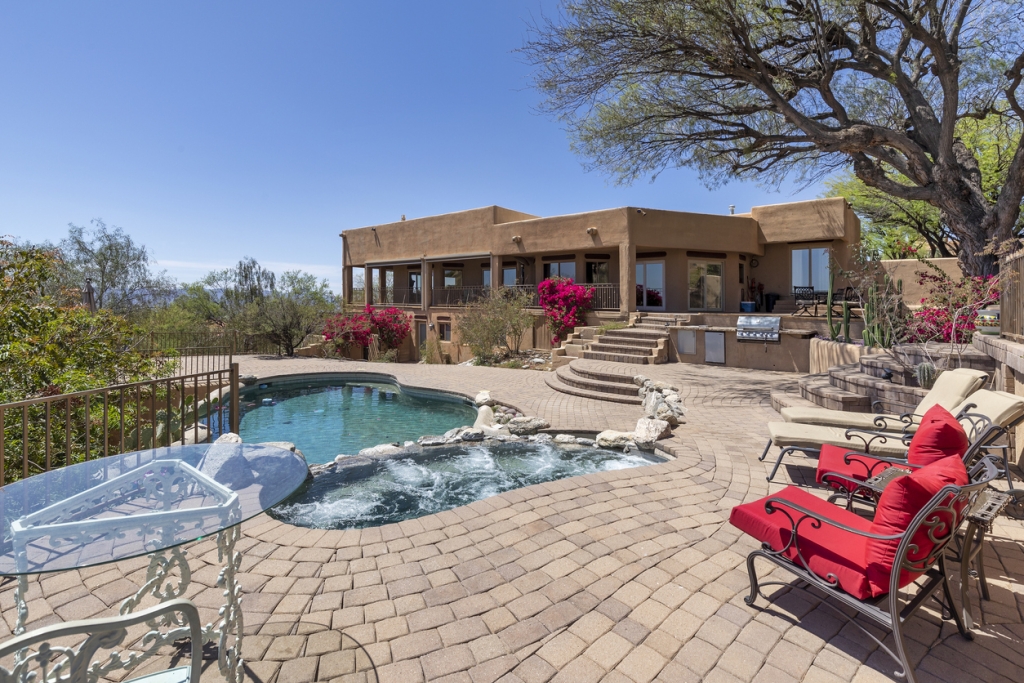
Brick has been around for years, has a traditional look, isn’t expensive to buy or install, is pretty easy to maintain, and could last for years. So what’s not to love? Well, it’s not the most visually appealing of the pool deck materials on offer and is prone to developing moss and algae if you don’t stay on top of your pool maintenance.
But if you like the look – and many do! – it’s a more than acceptable option.
Tile
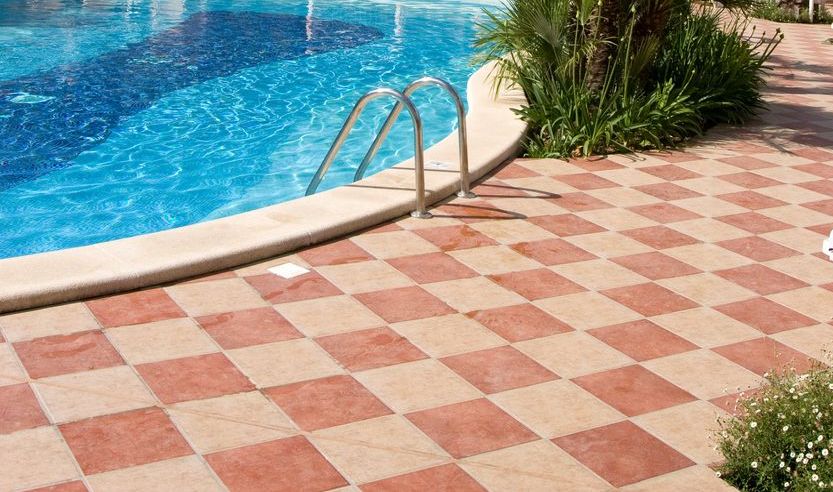
Wood, stone, and brick adherents might go on about their natural appearance – and we certainly wouldn’t argue – but, when it comes to pool deck materials, nothing screams taste and sophistication quite like good modern tiles.
Of course, that doesn’t mean that you can’t get plain or cheap tiles that will still more than do the job, but if you want to create something special – even artistic – then it’s worth going that bit further to get something that really speaks to you.
If all that weren’t enough, your tiles should also be designed to be fully slip-resistant (although some will get very slippery when wet, so do take care to get the right sort) and comfortable to walk on in both hot and cold temperatures. The tiles themselves should be easy to maintain and keep clean, but you will need to put in more effort to keep the grouting looking like new.
Pavers
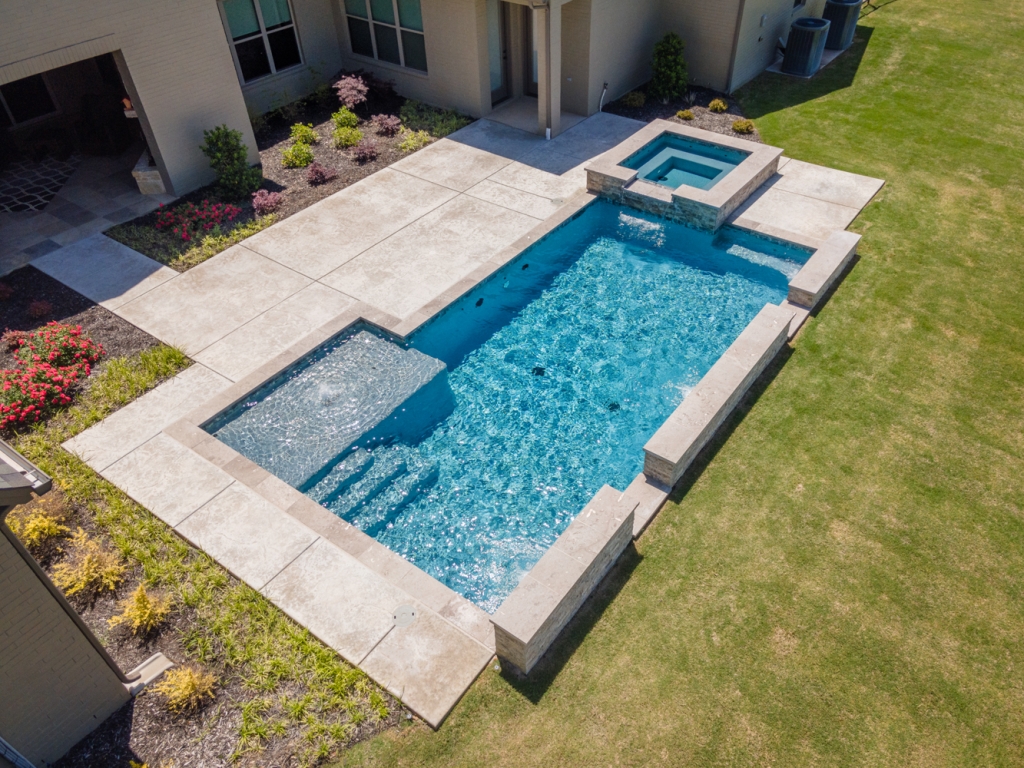
A step up from plain concrete or brick but a step down from wood, stone, and tiles, pavers nevertheless make for a perfectly fine and very cost-effective pool deck surface. If part of your deck gets damaged at any point, it’s usually easy to repair, but you need to factor in some kind of permanent border, as paving is prone to slipping over time otherwise.
If you already have paving in any part of your backyard, you’ll also be aware that you’ll need to dedicate increasing amounts of time to preventing weeds from growing through the cracks.
If you’re thinking of remodeling or renovating your swimming pool and want expert advice on the best deck material for your preferences and backyard, talk to the team at Pulliam Pools today. We create and remodel special pools for customers in and around Fort Worth, Weatherford, and Arlington.


